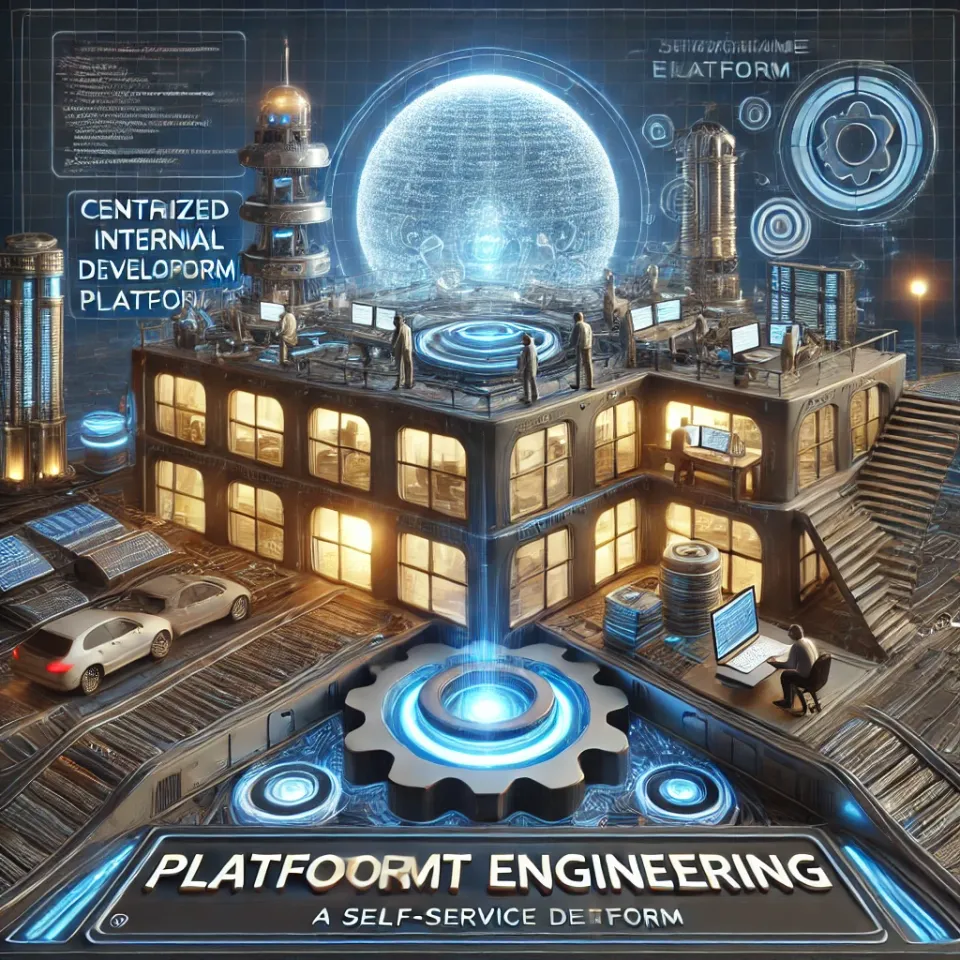Platform Engineering – Enabling Developer Productivity at Scale

What is Platform Engineering?
Platform Engineering aims to provide self-service capabilities for developers by creating reusable tools, services, and workflows. These platforms centralize operational concerns, making it easier for teams to deploy, monitor, and scale applications. The platform takes a long time to develop and relies on the fundamentals brought about by DevOps and Site Reliability Engineering practices but each have a unique scope of work.
Key Principles of Platform Engineering
- Developer Experience (DX) Platforms are designed with developers in mind, offering intuitive interfaces and clear documentation.
- Standardization By enforcing consistent practices, platforms reduce variability and improve system reliability.
- Self-Service Developers can independently provision resources, deploy applications, and access logs without needing direct intervention from operations teams.
- Scalability Platforms are built to handle the demands of multiple teams, ensuring consistent performance across workloads.
Core Components of an Internal Developer Platform
- Infrastructure Abstraction: Kubernetes, Serverless Framework, Cloud Foundry
- CI/CD Pipelines: Integrated workflows for building, testing, and deploying applications
- Observability: Unified dashboards and monitoring for all teams
Tools of the Trade
- Infrastructure: Kubernetes, Nomad, AWS CDK
- Workflow Automation: ArgoCD, Tekton
- Developer Portals: Backstage, Humanitec
Challenges
- Initial Investment: Building an IDP requires significant time and resources. Even going about and connecting an open-source IDP to the appropriate resources takes specialized expertise
- Evolving Needs: Platforms must adapt as business and technical requirements change.
- Buy-In: Gaining trust from developers is crucial for adoption. Avoid the mentality that if you build it, they will come
The Intersection of DevOps, SRE, and Platform Engineering
While each discipline has its unique focus, they share common goals of improving software delivery, enhancing reliability, and empowering teams. Here’s how they align:
| Aspect | DevOps | SRE | Platform Engineering |
|---|---|---|---|
| Focus | Culture and Collaboration | Reliability and Automation | Developer Productivity |
| Key Metric | Deployment Frequency | Service Level Objectives | Developer Satisfaction |
| Scope | Entire SDLC | System Reliability | Internal Developer Platforms |
Conclusion
The journey from DevOps to SRE to Platform Engineering reflects the evolution of modern software delivery practices. DevOps sets the cultural foundation, SRE ensures reliability through engineering, and Platform Engineering builds scalable solutions for developer productivity. By understanding and embracing the strengths of each, organizations can create robust systems that balance speed, reliability, and innovation.
In the end, the choice isn’t about picking one over the other but integrating these practices to address the unique needs of your organization. Together, they form the backbone of a modern, agile, and resilient technology ecosystem.
This is the final part of a three part series. Check out the first two for finding out what it means to be a Devops engineer and SRE




